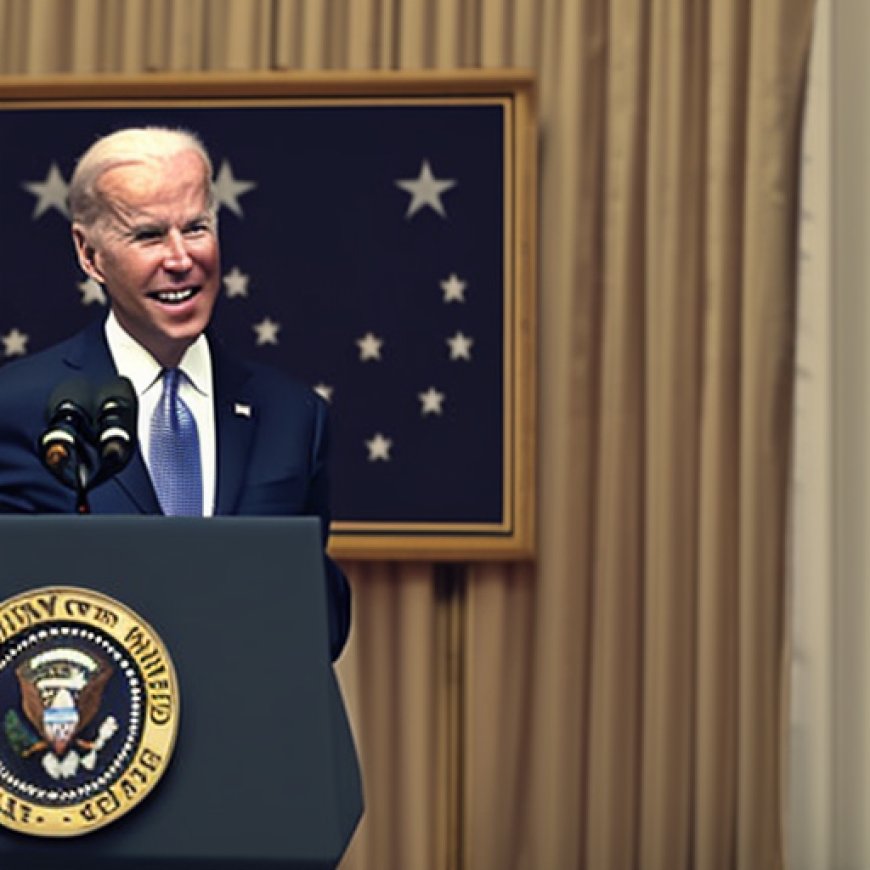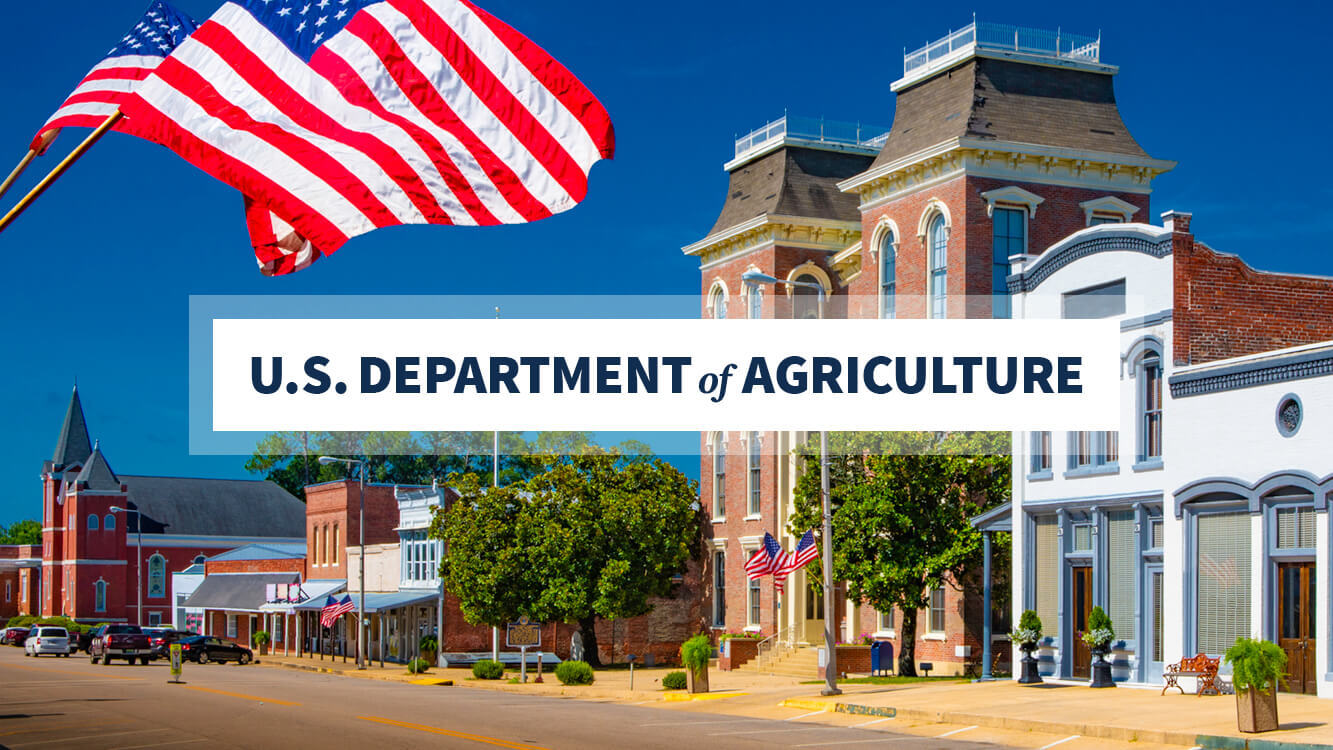President Biden Announces Over $5 Billion to Support Rural Communities During Investing in Rural America Event Series
President Biden Announces Over $5 Billion to Support Rural ... USDA.gov


Investing in Rural America: President Biden Announces Over $5 Billion in New Investments

Editor’s Note:
This fact sheet is reposted from the White House Briefing Room and details more than $5 billion in investments across five U.S. Department of Agriculture initiatives that are helping farmers adopt new climate-smart agricultural practices, supporting community infrastructure, and increasing economic development in rural towns and communities. These initiatives include:
WASHINGTON, November 1, 2023 – Today, President Biden will travel to Northfield, Minnesota to visit Dutch Creek Farms to lead his Administration’s Investing in Rural America Event Series and highlight investments from the Biden Administration in Rural America. During the visit, President Biden will announce over $5 billion in new investments from his Investing in America agenda – including the Bipartisan Infrastructure Law and the Inflation Reduction Act – to advance rural prosperity, economic development, competition, and sustainability. President Biden will also discuss how Bidenomics and his Investing in America agenda are ensuring rural Americans do not have to leave their hometowns to find opportunity.
Over the course of two weeks, President Biden, Cabinet members, and Senior Administration Officials are barnstorming across the country as part of the Investing in Rural America Event Series to highlight how the Biden-Harris Administration’s investments are bringing new revenue to farms, increased economic development in rural towns and communities, and more opportunity throughout the country.
$1.7 Billion in Investments in Climate-Smart Agriculture
The U.S. Department of Agriculture (USDA) is announcing nearly $1.7 billion in funding to support the adoption of climate-smart agriculture practices, which have direct climate mitigation benefits, advance a host of other environmental co-benefits, and offer farmers, ranchers and foresters new revenue streams. Dutch Creek Farms, where President Biden will visit today, is a family farm that grows corn and soybeans and raises hogs. Under the Biden-Harris Administration, Dutch Creek Farms has used several climate-smart agriculture techniques to make their farm more sustainable, including growing crops that naturally sequester carbon and improve soil quality, farming in a way that limits soil disturbance, and creating riparian buffers to protect nearby waterways from pollutants.
The funding President Biden will announce includes an unprecedented $1.1 billion investment across 81 projects through the Regional Conservation Partnership Program (RCPP), which takes a voluntary approach to expand the reach of conservation efforts and climate-smart agriculture through public-private partnerships. The announcement also includes fiscal year 2023 investments from the Inflation Reduction Act that are helping farmers adopt climate-smart agriculture practices. Through the Inflation Reduction Act, USDA has enrolled more farmers and more acres in voluntary conservation programs than at any point in history, following a backlog that has existed for years. In 2023, USDA enrolled nearly 5,300 additional producers in conservation programs across all 50 states (above what otherwise would have been possible through Farm Bill and appropriations funding), which will provide significant climate mitigation benefits. Today’s announcement includes:
- $100 million through the Agricultural Conservation Easement Program (ACEP);
- $250 million through the Conservation Stewardship Program (CSP); and
- $250 million through the Environmental Quality Incentives Program (EQIP).
$1.1 Billion in Investments in Rural American Infrastructure
USDA is announcing $1.1 billion across 104 loan and grant awards to upgrade infrastructure in rural communities that will bring new jobs, clean water and fuel, and reliable electricity to people in nearly every state. This funding includes $5 million from the Inflation Reduction Act to further increase the availability of renewable, homegrown biofuels. The announcement is part of President Biden’s Investing in America efforts to rebuild the physical infrastructure of our country to grow the economy for decades to come, create good-paying jobs, and better position rural America to compete in a global economy.
$2 Billion in Investments to Partner with Rural Communities to Create Jobs and Support Rural-led Economic Development
USDA is announcing $2 billion across 99 economic development projects in Rural Partners Network (RPN) communities in nine states and Puerto Rico – funding that will create jobs and build infrastructure as well as increase access to quality health care, affordable housing, and clean water and energy. RPN is transforming the way the federal government partners with rural communities by putting federal employees on the ground to help rural communities access federal resources. Last year, the Biden-Harris Administration launched Rural.gov to help connect all rural communities to federal resources. Today, the Administration is announcing it is piloting a new resource clearinghouse function on Rural.gov with funding opportunities for rural communities to facilitate access to federal programs.
$274 Million to Expand Critical Rural High-Speed Internet Infrastructure
USDA is announcing nearly $274 million across 16 grant and loan awards to expand access to high-speed internet for people living and working across eight states. These investments include $260 million as part of the fourth round of the ReConnect Program funded by the Bipartisan Infrastructure Law, which provided a total of $65 billion to ensure every American has access to affordable, reliable high-speed internet. In total, the Biden-Harris Administration is investing $90 billion to deliver affordable high-speed internet to everyone in America, including in rural communities that often lack access to high-speed internet.
$145 Million to Expand Access to Renewable Energy and Lower Energy Costs for Rural Americans
USDA is announcing $145 million in funding for 700 loan and grant awards through the Rural Energy for America Program (REAP) to help agricultural producers and rural small business owners make energy efficiency improvements and renewable energy investments to lower energy costs, generate new income, and strengthen the resiliency of their operations. This funding is made possible in part by President Biden’s Inflation Reduction Act –
SDGs, Targets, and Indicators in the Article
1. Which SDGs are addressed or connected to the issues highlighted in the article?
- SDG 1: No Poverty
- SDG 2: Zero Hunger
- SDG 3: Good Health and Well-being
- SDG 6: Clean Water and Sanitation
- SDG 7: Affordable and Clean Energy
- SDG 8: Decent Work and Economic Growth
- SDG 9: Industry, Innovation, and Infrastructure
- SDG 11: Sustainable Cities and Communities
- SDG 13: Climate Action
- SDG 15: Life on Land
2. What specific targets under those SDGs can be identified based on the article’s content?
- Target 1.1: By 2030, eradicate extreme poverty for all people everywhere.
- Target 2.4: By 2030, ensure sustainable food production systems and implement resilient agricultural practices that increase productivity and production, that help maintain ecosystems, that strengthen capacity for adaptation to climate change, extreme weather, drought, flooding, and other disasters, and that progressively improve land and soil quality.
- Target 3.8: Achieve universal health coverage, including financial risk protection, access to quality essential health-care services, and access to safe, effective, quality, and affordable essential medicines and vaccines for all.
- Target 6.1: By 2030, achieve universal and equitable access to safe and affordable drinking water for all.
- Target 7.2: By 2030, increase substantially the share of renewable energy in the global energy mix.
- Target 8.3: Promote development-oriented policies that support productive activities, decent job creation, entrepreneurship, creativity, and innovation, and encourage the formalization and growth of micro-, small-, and medium-sized enterprises, including through access to financial services.
- Target 9.1: Develop quality, reliable, sustainable, and resilient infrastructure, including regional and transborder infrastructure, to support economic development and human well-being, with a focus on affordable and equitable access for all.
- Target 11.3: By 2030, enhance inclusive and sustainable urbanization and capacity for participatory, integrated, and sustainable human settlement planning and management in all countries.
- Target 13.1: Strengthen resilience and adaptive capacity to climate-related hazards and natural disasters in all countries.
- Target 15.1: By 2020, ensure the conservation, restoration, and sustainable use of terrestrial and inland freshwater ecosystems and their services, in particular forests, wetlands, mountains, and drylands, in line with obligations under international agreements.
3. Are there any indicators mentioned or implied in the article that can be used to measure progress towards the identified targets?
- Indicator 1.1.1: Proportion of population below the international poverty line.
- Indicator 2.4.1: Proportion of agricultural area under productive and sustainable agriculture.
- Indicator 3.8.1: Coverage of essential health services.
- Indicator 6.1.1: Proportion of population using safely managed drinking water services.
- Indicator 7.2.1: Renewable energy share in the total final energy consumption.
- Indicator 8.3.1: Proportion of informal employment in non-agriculture employment.
- Indicator 9.1.1: Proportion of the rural population who live within 2 km of an all-season road.
- Indicator 11.3.1: Ratio of land consumption rate to population growth rate.
- Indicator 13.1.1: Number of deaths, missing persons, and directly affected persons attributed to disasters per 100,000 population.
- Indicator 15.1.1: Forest area as a proportion of total land area.
Table: SDGs, Targets, and Indicators
| SDGs | Targets | Indicators |
|---|---|---|
| SDG 1: No Poverty | Target 1.1: By 2030, eradicate extreme poverty for all people everywhere. | Indicator 1.1.1: Proportion of population below the international poverty line. |
| SDG 2: Zero Hunger | Target 2.4: By 2030, ensure sustainable food production systems and implement resilient agricultural practices that increase productivity and production, that help maintain ecosystems, that strengthen capacity for adaptation to climate change, extreme weather, drought, flooding, and other disasters, and that progressively improve land and soil quality. | Indicator 2.4.1: Proportion of agricultural area under productive and sustainable agriculture. |
| SDG 3: Good Health and Well-being | Target 3.8: Achieve universal health coverage, including financial risk protection, access to quality essential health-care services, and access to safe, effective, quality, and affordable essential medicines and vaccines for all. | Indicator 3.8.1: Coverage of essential health services. |
| SDG 6: Clean Water and Sanitation | Target 6.1: By 2030, achieve universal and equitable access to safe and affordable drinking water for all. | Indicator 6.1.1: Proportion of population using safely managed drinking water services. |
| SDG 7: Affordable and Clean Energy | Target 7.2: By 2030, increase substantially the share of renewable energy in the global energy mix. | Indicator 7.2.1: Renewable energy share in the total final energy consumption. |
| SDG 8: Decent Work and Economic Growth | Target 8.
Behold! This splendid article springs forth from the wellspring of knowledge, shaped by a wondrous proprietary AI technology that delved into a vast ocean of data, illuminating the path towards the Sustainable Development Goals. Remember that all rights are reserved by SDG Investors LLC, empowering us to champion progress together. Source: usda.gov
Join us, as fellow seekers of change, on a transformative journey at https://sdgtalks.ai/welcome, where you can become a member and actively contribute to shaping a brighter future.
|








